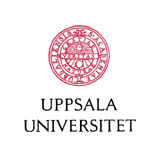|
Coding and Resource Scheduling in Packet Oriented
Adaptive TDMA/OFDMA Systems.
Tommy Svensson
,
Chalmers U. of Technology,
Sorour Falahati
, Ericsson AB and
Mikael Sternad
, Uppsala University.
IEEE 63d Vehicular Technology Conference, VTC2006-Spring
, Melbourne, Australia, May 2006.
© IEEE
-
Outline:
-
Adaptive systems allocate (schedule) time, frequency and antenna
resources based on channel quality and user requirements.
They enable efficient resource utilization and multi-user
scheduling gains, when channels to different terminals
fade independently.
In systems based on time division
multiple access/ adaptive OFDM (TDMA/OFDMA),
time-frequency resources (chunks) are allocated to
the individual users and link adaptation is performed
individually in each chunk. The chunk size is chosen
such that the channel is essentially flat in time and frequency.
This provides a flexible small-scale granularity of the
resources for multi-user scheduling and link adaptation,
which makes it possible to obtain large multi-user diversity gains
Based on the results obtained within the Swedish
Wireless IP (WIP) project,
we are currently evolving and assessing the feasibility of
adaptive TDMA/OFDMA in novel broadband radio
interfaces within the EU FP6 Integrated Project WINNER.
We here investigate adaptive downlinks and uplinks based
on fast scheduling and link adaptation,
also for users at vehicular speeds, with a non-adaptive
diversity-based fall-back mode.
In the proposed downlink, each terminal predicts the
signal-to- interference-and-noise ratio (SINR) over a
major part of the total bandwidth. All active terminals
report source coded SINR values or source coded suggested
modulation formats over a shared uplink control channel.
A resource scheduler, located close to one or several radio
access points, allocates the downlink resources.
An open question raised here is how to best combine
this fine-grained resource allocation and link adaptation
with efficient channel coding schemes and retransmission
protocols for network layer packets. An adequate combination
preserves the multi-user scheduling and link adaptation
gains regardless of various sizes of packets and different
reliability requirements. This study proposes some
approaches to tackle this problem, and initial results are presented.
-
Abstract:
-
Within the EU FP6 Integrated Project WINNER,
adaptive transmission is investigated as a key technology
for boosting the spectral efficiency of a new radio interface for 4G systems.
Adaptive allocation and link adaptation of time-frequency
chunks based on channel prediction in an OFDM-based
system offers a significant potential to design a spectrally
efficient system. The chunk size is typically defined based
on the minimum coherence time and coherence bandwidth
of the targeted channels. It is important to allow efficient channel
coding and link retransmission schemes without restricting
the resource scheduler, even for systems using small chunk sizes,
to achieve multi-user diversity gains.
In this paper we introduce
some possible approaches to implement FEC coding and
Hybrid ARQ and analyze their interplay with resource scheduling
in packet oriented adaptive TDMA/OFDMA.
-
Related publications:
-
Proc. of the IEEE (Dec. 2007)
invited paper on
adaptive transmission in beyond-3G wireless systems.
-
IST Mobile Summit 2005 paper
on the WINNER phase 1 results this paper improves upon.
-
IST Mobile Summit 2006 paper
describing the WINNER phase 1 MAC
concept for cellular transmission.
-
Later WINNER II design (ICT Mobile Summit 2008).
-
Downlink control overhead
in WINNER II design (VTC-Fall 2008).
-
Wireless IP project Paper 1 at VTC2003,
on adaptive modulation, multiuser diversity
and channel variability within bins in downlinks.
-
Wireless IP project Paper 2 at VTC2003,
on the OFDM downlink and cell planning for high SIR.
-
Wireless IP project Paper 3 at VTC2003,
on OFDM downlink channel estimation and channel prediction.
-
Wireless IP project Paper 4 at VTC2003,
on the impact of prediction errors on the adaptive modulation.
-
Source:
-
Pdf, (239K)
|
The Wireless IP Project Homepage
|
Main
entry in list of publications
|
This material is posted here with permission of the IEEE.
Such permission of the IEEE does not in any
way imply IEEE endorsement of any of Uppsala University's
products or services.
Internal or personal use of this material is permitted.
However, permission to reprint/republish this material for
advertising or promotional purposes or for creating new collective
works for resale or redistribution must be obtained
from the IEEE by writing to [email protected].
By choosing to view this document, you agree to all
provisions of the copyright laws protecting it.
|

